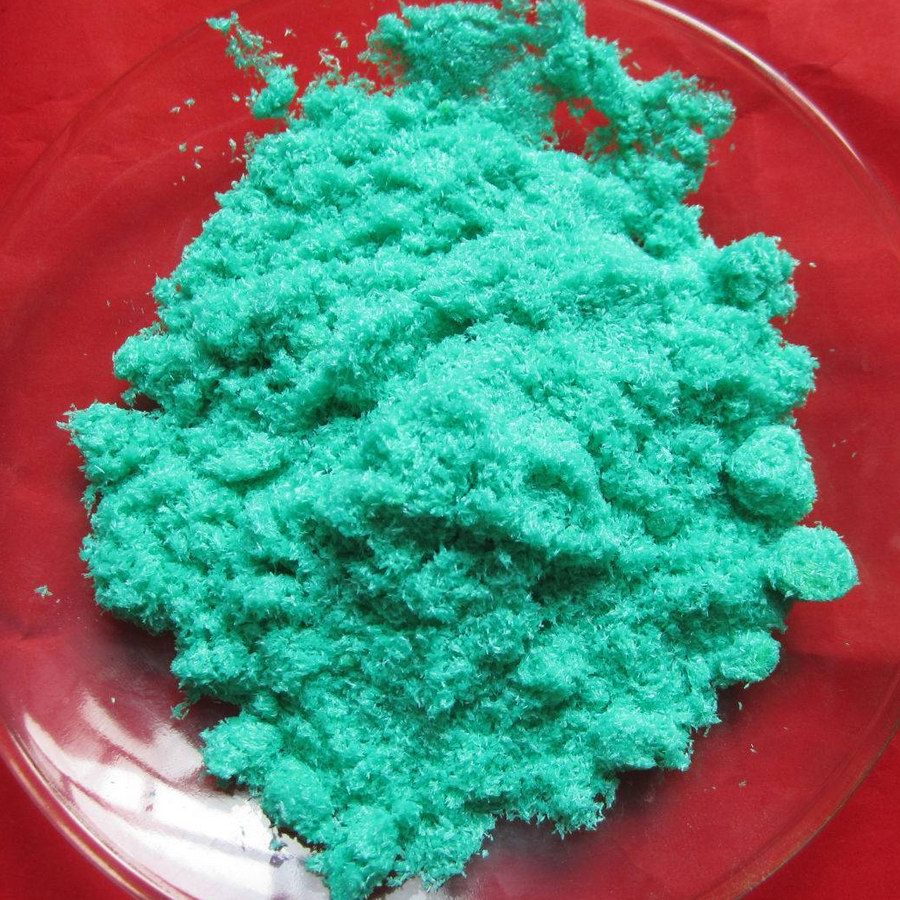
Visual Art |
Up |
Prev |
Next |
"Malachite", the hue, is the colour of rough aquamarine, various copper compounds, some specimens of Jade, certain cacti and certain leafy vegetables.
As is the case for green there has always been a lack of clean, stable pigments for this hue. Even today most brighter greens are obtained by mixing blue and yellow. Nevertheless there are modern pigments in nearby hues that can be used, such as: Pthalo Green, Cobalt Green and Cobalt Turquoise from cobalt(II) titanate (CoTiO3).
| Aquamarine | Blue Agave | Rough Aquamarine |
| HSB 152°, 31%, 100% RGB 176, 255, 218 |
 |
 |
| "Blue Agave" is the colour of ... | "Blue Agave" is the species of Agave that Tequila is made from. It grows around Jalisco, Mexico and this is its colour. | Aquamarine, like most gemstones, varies significantly in colour between the rough and the cut forms. This is a fairly typical example of its rough state. |
| Verdigris | Verdigris | Copper(II) Chloride Dihydrate |
| HSB 166°, 100%, 100% RGB 0, 255, 196 |
 |
 |
| "Verdigris" is the colour of certain copper compounds that occur naturally. In particular, compounds of the Cupric ion and chloride and carbonate ions possibly in hydrated form. | "Verdigris" is the natural patina formed when copper, brass or bronze corrodes. It is a equal mixture of Cu(OH)2 and CuCO3. Cupric Carbonate is the colour of verdigris. | Copper(II) Chloride is a light brown solid which absorbs water to form the dyhydrate CuCl2·2H2O. |
| Shallow Sea Green | Shallow Sea Green | Light Malachite |
| HSB 172°, 100%, 72% RGB 0, 184, 159 |
 |
 |
| "Shallow Sea Green" is the colour of the shallow sea in the right light and also the colour of certain specimens of malachite and jade. It is also the colour of hydrated chromium oxide. | The sea has a great many colours depending on the weather and the depth. This is the colour of the shallow sea on a sunny day. This colour is typical of waves close to the shore that are lit from behind. | Malachite does vary in colour and in fact is normally composed of bands of this hue of varying shades. This colour is the lighter tone. |
| Broccoli | Broccoli | Peyote |
| HSB 172°, 100%, 57% RGB 0, 145, 126 |
 |
 |
| "Broccoli" is the colour of broccoli leaves and also the florets in the right light. It is also the colour of the peyote cactus and mid tones of malachite. | Broccoli leaves and also the florets have this colour in the shade, most notably in the supermarket. | Peyote is a cactus that exhibits a desaturated example of this hue and tone. |
| Malachite | Dark Malachite | Teal |
| HSB 172°, 100%, 30% RGB 0, 76, 66 |
 |
 |
| "Dark Malachite" is the colour of the darker bands in most examples of Malachite, the stripe behind the eye of certain ducks and certain specimens of jade. | Malachite does vary in colour and in fact is normally composed of bands of this hue of varying shades. This dark tone however is normally the dominant colour. | The Common Teal (Anas crecca), is a common and widespread dabbling duck in Eurasia. It gives its name to the colour "Teal" which is supposed to be the colour of the plumage surrounding its eyes. This is that colour. Note that it is quite different to the Dark Cyan that is currently ascribed this name. How does such stupidity happen? Do the words: "incompetent leaders" and "unquestioning sheep" meaning anything to you? |